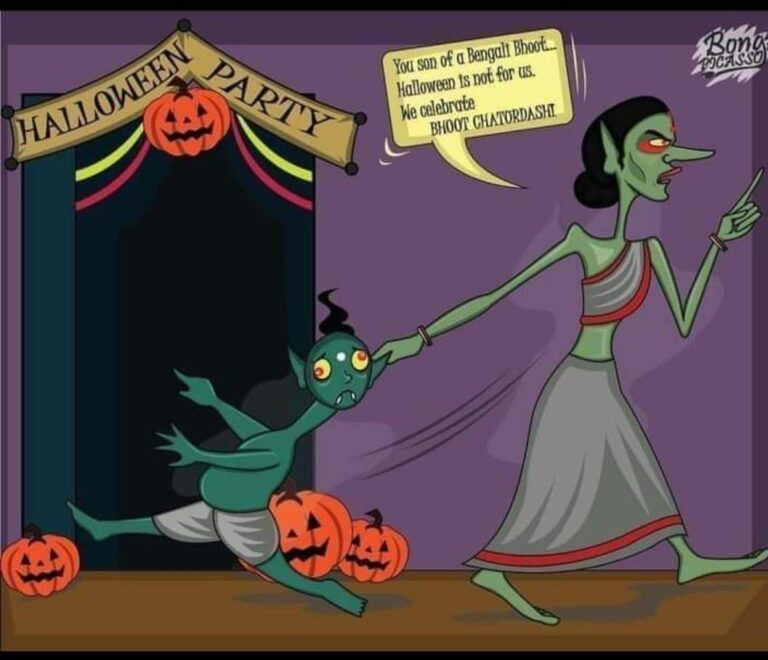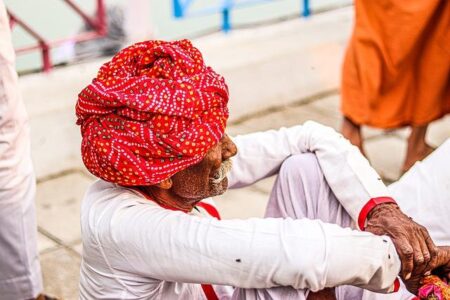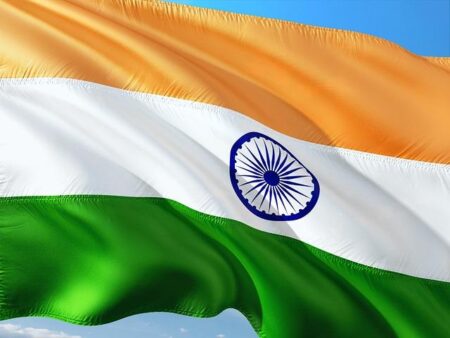Today marks Bhoot Chaturdashi, a significant day in India that mirrors the eerie festivities of Halloween, where supernatural beliefs take center stage. Observed on the 14th day of the Krishna Paksha in the Hindu lunar calendar, this festival is steeped in traditions meant to honor and ward off spirits. Across various regions, devotees engage in rituals and customs that reflect the country’s rich cultural tapestry surrounding the afterlife and the supernatural. As India’s own version of Halloween, Bhoot Chaturdashi brings to life stories of ghosts and spirits, blending ancient folklore with contemporary observance.
Bhoot Chaturdashi Celebrations Across India Unveil Rich Traditions and Spiritual Beliefs
Bhoot Chaturdashi stands as a striking blend of mysticism and cultural heritage, observed predominantly in the eastern and northern regions of India. On this night, households light 14 earthen lamps in courtyards and on doorsteps, believed to guide wandering spirits back to their realm, preventing them from lingering and causing harm. The day also marks the eve before Kali Puja, intertwining reverence for both protective deities and ancestral spirits. Traditional rituals involve the preparation of poppy seeds and sesame seed sweets, offerings that symbolize respect and appeasement toward the ethereal entities.
Across various states, distinct practices enrich the celebrations, highlighting the diversity in spiritual beliefs:
- West Bengal & Odisha: Milk and sweets are left outside homes to honor departed souls.
- Bihar: Families perform nighttime prayers and maintain hush to respect the spiritual ambiance.
- Jharkhand: Sacred fires are kindled, and community gatherings share folk tales of spirits.
| Region | Unique Tradition | Symbolic Meaning |
|---|---|---|
| West Bengal | Lighting 14 lamps | Guidance for spirits |
| Odisha | Offering sesame sweets | Appeasement of ancestors |
| Bihar | Silent prayers | Respect and protection |
| Jharkhand | Folk storytelling nights | Preservation of oral tradition |
How Communities Prepare to Honor Ancestors and Ward Off Evil Spirits on This Eerie Night
Across various Indian households, meticulous preparations mark this night dedicated to reconnection with ancestral spirits and protection against malevolent forces. Families light earthen lamps (diyas) and incense, believed to guide the souls of forefathers back home, while wearing traditional attire as a mark of respect. Elaborate altars adorned with marigold garlands, photographs, and offerings such as sweets and seasonal fruits become the centerpiece of these rites. Meanwhile, in some regions, specific rituals involve chanting mantras and performing pujas to invoke peace and ward off any lurking negativity, making the atmosphere a blend of devotion and cautious reverence.
- Lighting of diyas around homes to dispel darkness and evil spirits.
- Burning of cow dung cakes near entrances believed to purify and protect.
- Dispensing charity to honor ancestors and seek their blessings.
- Applying turmeric and sindoor as protective talismans on doorways.
- Recitation of folk tales and ancestral legends to keep memories alive.
| Region | Key Custom | Purpose |
|---|---|---|
| West Bengal | Sharing of ‘bhog’ (offering food) | Feeding the spirits |
| Gujarat | Lighting camphor lamps near graves | Invoking ancestors’ blessings |
| Maharashtra | Using neem leaves at home entrances | Warding off evil entities |
Safety Tips and Ritual Guidelines for Observing Bhoot Chaturdashi with Reverence and Caution
Observing Bhoot Chaturdashi demands a respectful balance between tradition and mindfulness. Participants should avoid venturing into dark, isolated areas after dusk, as the night is believed to be charged with spiritual energy. When performing rituals, use only natural materials such as clay lamps, flowers, and incense to maintain sanctity. It is also advisable to keep children and elderly family members indoors during the peak evening hours to ensure safety without interrupting the reverence of the night.
Engage in rituals with a calm and focused mind, minimizing loud noises or disruptive behavior that could disturb the solemnity. Ensure all diyas and candles are placed on stable, non-flammable surfaces away from curtains and paper decorations. For those lighting torches or crackers as part of festivities, adherence to fire safety rules is paramount. Here’s a quick checklist to guide your observance safely:
- Use eco-friendly materials to promote a cleaner and safer environment.
- Keep water and sand nearby for emergencies during lamp-lighting.
- Observe social distancing in public gatherings or communal prayers.
- Do not consume unverified traditional substances sometimes offered during rituals.
| Safety Aspect | Recommended Actions |
|---|---|
| Candle & Lamp Use | Place on stable surfaces away from flammable items |
| Gatherings | Maintain distance, wear masks if indoors |
| In Conclusion
As Bhoot Chaturdashi unfolds across India today, communities come together to honor a tradition that blends reverence and folklore, marking a unique cultural counterpart to Halloween. While the rituals and stories vary regionally, the underlying theme remains consistent-a night when the boundaries between the living and the spirit world are believed to blur. Observed with a mix of devotion and festivity, Bhoot Chaturdashi continues to be a vivid reminder of India’s rich heritage and its enduring connection to the supernatural. |




